SENLIS – 2,000 YEARS OF HISTORY JUST A DAY TRIP FROM PARIS

The medieval town of Senlis is situated near the magnificent Château estate and town of Chantilly. It’s the kind of French town in which you could happily lose yourself for hours, wandering along the narrow, cobblestoned alleyways and soaking up its history, which stretches back to pre-Roman times. It’s perfect for a day trip from Paris, especially for those who have already visited Versailles and Fontainebleau, and are looking for another rewarding experience out in the beautiful French countryside.

About 40 kms N.E. of Paris, Senlis lies along the river Nonette, a tributary of the Oise, in the Picardie region of France, and aside from its rich history, is today famed for growing endives, beetroots, and producing an orange-flavoured chocolate, named after locally celebrated painter, Séraphine de Senlis.. Originally called Augustomagus (“Augustus’ market”) in early Roman imperial times, its name derives from its 4th century Roman name, Civitas Silvanectium (City of the Silvanectium).
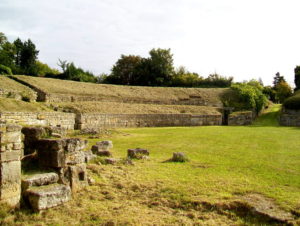
The town had an impressive Roman amphitheatre, the remains of which are still visible, about 500m west of the walled town. This amphitheatre had a seating capacity of 11,000 people, and was used for public meetings, theatre performances, gladiatorial combats and animal hunts. It was rediscovered in 1865 by a Senlis local interested in the ancient history of his town, who organised excavations that lasted for almost a century. The unearthed remains include the arena, a vestibule leading to the two main vomitoria, sets of steps, two rooms thought to have been votive chapels, and an “official box” that would have been occupied by representatives of the imperial authorities.
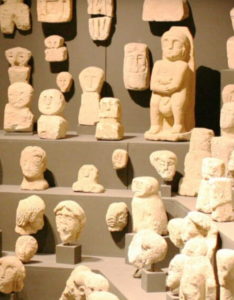
A base of the statue of Emperor Claudius was discovered in 1949 during excavations in front of the Château Royal. It was broken into over 600 fragments and buried 4 metres deep. Once the pieces were reassembled, an inscription to the glory of Emperor Claudius came to light, dated 48 AD. The remains of a 2nd century AD domus, a Gallo-Roman house, was discovered in 1986 under the old Episcopal palace. The inner courtyard, of which part of the paving is still visible, as well as original flooring on the ground floor and the basement windows are still there.
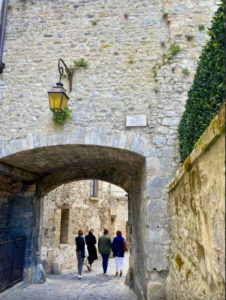
During the 3rd century, a 7 m. high defensive wall, about half of which still exists, was erected around the settlement in response to Frankish invaders. The wall was 860m long with 28 towers spaced along its length, encircling the 8 hectares of the heart of Augustomagus. Columns from former Roman temples and carved stone fragments showing figures wearing laurel wreaths were placed side by side to form a robust foundation, above which the wall itself was built in the traditional manner. Sixteen towers of the wall are still visible, and those near the cathedral and the remains of the Palais Royal are accessible to visitors.
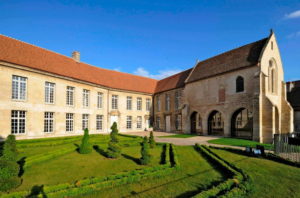
The town’s Musée d’Art et d’Archaeologie is itself a relic from the town’s Gallo-Roman past. Part of its very interesting collection includes memorabilia of the first dynasty to rule over France, the Merovingians, who ruled from 5th – 8th century. Protected by its defensive outer wall, Senlis was a fortress that remained inviolate during the whole of the early Middle Ages.
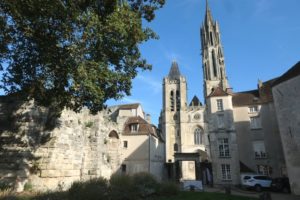
Under Charles the Bald it became a place of detention, and a refuge for the royal treasury and precious relics saved from Compiegne, after an attack by the Normans in 885.

In 987, Alberon, the archbishop of Reims, called together an assembly and asked them to choose Hugh Capet, founder of a new dynasty, the Capetians, as king of France. He was proclaimed king and crowned at Noyon in 987. Senlis had fallen under the ownership of Hugh Capet in 981 and became part of the French royal domain upon his ascent to the throne. However, later monarchs abandoned Senlis, preferring instead Compiegne and Fontainebleau., although the town officially remained a royal city until the reign of Charles X in 1824. King Henri IV was the last king to reside at Senlis.
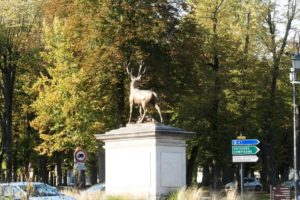
The monarchs of the early French dynasties, the Merovingians and especially the Carolingians, were attracted by the proximity of the Chantilly Forest and its game, especially venison, and built a château in Senlis on the foundations of the Roman settlement.

The 12th century was the golden age of Senlis, due in part to the trade in wool and leather, while vineyards began to grow in the area. Royalty was constantly present, surrounded by landed nobility and the Church, represented by the cathedral Chapter, was a very wealthy landowner. The town benefited from the rebuilding of an impressive number of religious and secular buildings, the layout of the town became permanent within the Gallo-Roman outer wall.
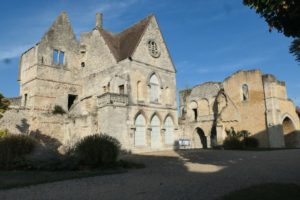
The Château Royal, which backs onto the ramparts, was rebuilt several times during this period, of which the walls, adorned with elegant arches with broken-line pilasters have survived. Louis IX decided to build, next to the château, a monastery, the Prieuré Saint-Maurice, to house the relics of St Maurice. All that remains of the Prieuré is the monks’ dormitory, which had numerous alterations up until the 19th century.
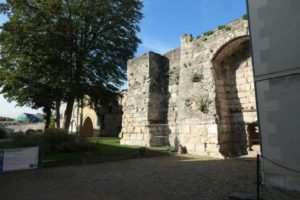
The town expanded, necessitating new ramparts, as part of the town’s improved defences. A second level was built in the 12th century under Philip II that was larger and higher than the ramparts of the Gallo-Roman era.
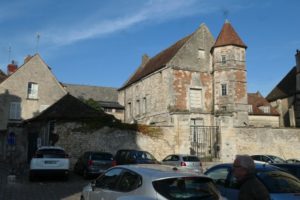
Various other important buildings included the Hôtel de Vermandois, located between the Cathedral and the Chateau Royal, which was built by Raoul de Vermandois, seneschal to Louis VI and Louis VII.
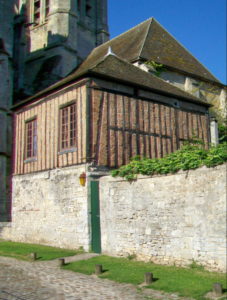
Three major parish churches were built, and at the very heart of town, the epic proportions of the Cathédale Notre-Dame were constructed around 1150, and consecrated by the Bishop of Reims in June 1191. Its impressive 78m tower was completed in the 13th century. Typical of such buildings, the ensuing centuries saw a number of alterations and extensions, and to its north, the Bibliothèque du Chapître (the Chapter House Library), was built between 1390 and 1410 on the foundations of one of the Gallo-Roman towers.

In 1504, the roof of the Cathedral was struck by lightning, causing a huge fire. Reconstruction and restoration continued for over 50 years and the result is what we see today.

A municipal charter was granted to the town in 1173 by King Louis VII. The bishop of Senlis and Chancellor Guerin became close advisors to the King, strengthening Senlis’ ties to French royalty. In 1265, the territory under the jurisdiction of the royal bailiff increased, creating the Bailiwick of Senlis, which covered a vast territory covering Beauvais and across to Vexin.
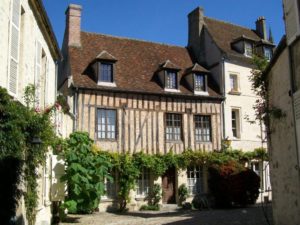
As a consequence of this increasing importance and prosperity, a number of impressive private mansions and public buildings were constructed in Senlis in the ensuing centuries. Nevertheless, by 1319, the town had become crippled by debt and passed into total control of the crown.
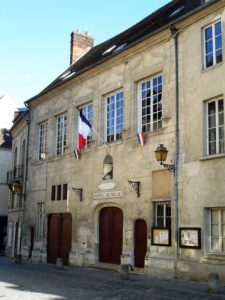
Senlis was devastated by the Hundred Years’ War, but managed to escape destruction despite being besieged by the Armagnacs faction, which was prominent in French politics and warfare at this time. The town’s economy suffered heavily, and would have to wait until the 15th century for another boom, during which many buildings were built or restored. A new Hotel de Ville was built in 1495, and still serves that function today.
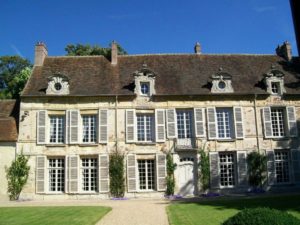
During the 17th century, Senlis entered a relatively stable period, during which time royal officials and wealthy bourgeois invested their fortunes in fine mansions built in the classical style. One of the finest of these is the Hôtel Germain on Place Gérard de Nerval, built by Jacques Germain, the king’s secretary, in 1608. Featuring alternating round and rectangular skylights under a curved pediment, it was built in a park surrounded by a splendid wall, with an impressive portal and triumphal arch.
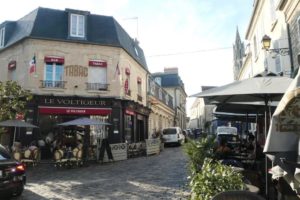
By the 19th and 20th centuries, Senlis had become a sleepy little Sous-Prefecture. It saw fighting in WWI, with the Germans occupying the town in early Sept. 1914. Several people, including the mayor, Eugène Odent, who had been organising civilian resistance, were executed by the Germans.
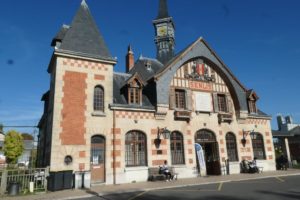
In addition, the railway station and Court House were burnt down, along with other buildings. The town was later liberated that same year by the French Army. The railway station was rebuilt in 1922 in an Anglo-Norman neo-renaissance style. It now serves as the Gare Routiere (bus station).
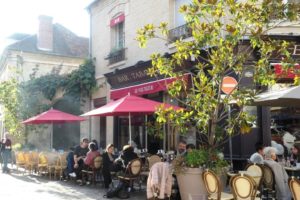
The centre of this historic town is full of shops, cafes, brasseries and restaurants, and it’s a delight to simply wander the maze of streets enjoying the sights and the wealth of architectural treasures. If you visit Senlis on a Tuesday or Friday, the bustling morning market that sets up in the town centre is an extra treat.
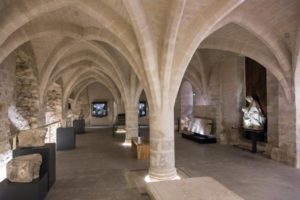
Beneath the cobblestone streets lies a hidden treasure. Some of the most beautiful, vaulted cellars of the Middle Ages can be seen under the Museum of Art & Archaeology. To join a guided tour of this museum, pop into the Office de Tourisme, located opposite the cathedral.
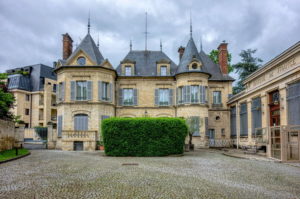
For such a small town, it’s something of a surprise to learn that it has a number of very good museums, principally, the Museum of Art and Archaeology, which occupies the former Episcopal palace next to the cathedral; the Hotel de Vermandois, devoted to the history of the town and the cathedral, and the museum of Spahis, opposite the Tourist Office, that explores the history of Senlis when it was a garrison town.
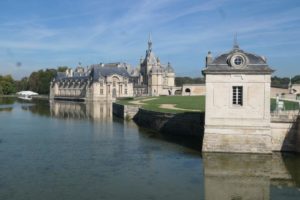
Although Senlis is no longer accessible by train, it’s still easy to get there from Paris. Take a train from Gare du Nord to Chantilly, and just 50m up a side path will take you to the rows of bus stops. Take the no. 645 bus from Chantilly across to Senlis, which takes a little less than 20 mins. The disused railway station at Senlis is now the Gare Routiere. It’s a very pretty bus ride, passing by the enormous estate of the Chateau de Chantilly, which I wrote about in a blog from a little while ago: https://parisplusplus.com/beyond-paris/travels-with-your-navigo-chateau-de-chantilly/ . A lovely day’s excursion out of Paris!
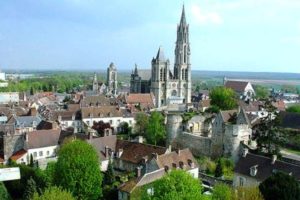


Leave a Reply